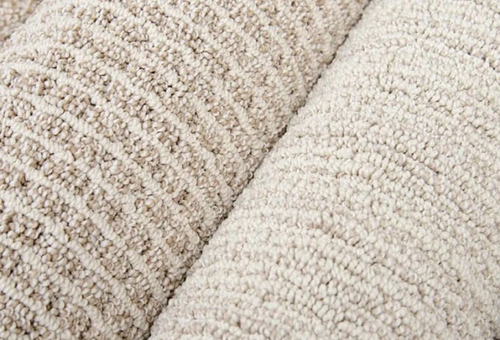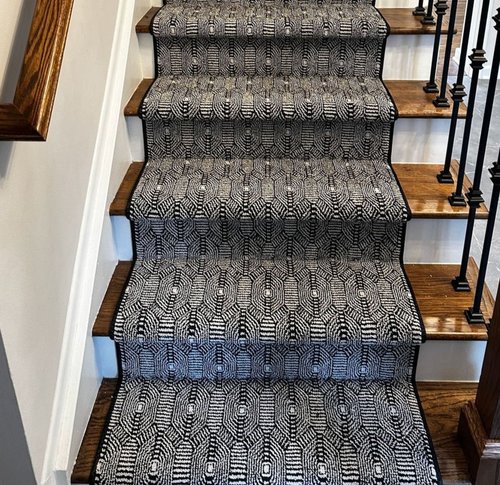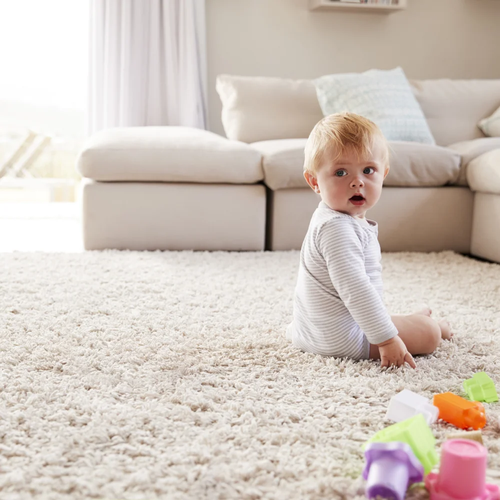Choosing the right carpet for your home is an investment, and understanding its longevity can help you make informed decisions.
In this guide, we will explore various factors that contribute to carpet lifespan, discuss the average lifespan of carpets in homes, examine the durability of carpets on stairs, shed light on the duration of new carpet smell, and provide three essential ways to increase carpet longevity.

Factors that Contribute to Carpet Lifespan
Types of Carpet Fibers
- Nylon: Nylon is the most popular synthetic carpet fiber known for its exceptional durability, resilience, and resistance to stains and wear. It is ideal for high-traffic areas and can last up to 15 years or more with proper care.
- Polyester: Polyester carpets offer excellent stain resistance and vibrant color options. While slightly less durable than nylon, they are still a good choice for moderate-traffic areas and can last around 5 to 10 years.
- Wool: Wool is a luxurious and resilient natural fiber that offers exceptional durability and natural stain resistance. It can last up to 20 years or more when properly maintained. Wool carpets may require more frequent professional cleaning and careful maintenance to preserve their longevity.
Carpet Density
Carpet density refers to the number of fibers per square inch and plays a crucial role in determining its durability and lifespan. Higher density carpets have more fibers tightly packed, making them more resistant to wear and tear. Here are a few density-related terms to understand:
- Low Density: Low-density carpets have fewer fibers per square inch, making them more susceptible to matting, wear, and crushing. They are suitable for areas with minimal foot traffic, such as bedrooms or formal living rooms.
- Medium Density: Medium-density carpets strike a balance between durability and comfort. They are suitable for moderately used areas such as family rooms or dining rooms, offering both softness and longevity.
- High Density: High-density carpets have a greater number of fibers per square inch, making them highly durable and resilient. They are ideal for high-traffic areas like hallways, stairs, and living rooms, providing exceptional longevity.
Pile Height
Pile Height: Pile height refers to the length of the carpet fibers. Shorter pile heights tend to be more durable and less prone to matting, making them suitable for high-traffic areas. Longer pile heights offer a softer, more luxurious feel but are better suited for low-traffic areas.
Carpet Padding
Quality carpet padding helps absorb impact, reducing stress on the carpet fibers and extending its lifespan. It provides additional support, enhances comfort, and helps prevent premature wear and tear.

Average Lifespan of Carpet in a Home
On average, carpets in residential homes can last between 5 to 15 years, depending on various factors such as foot traffic, maintenance, and the quality of the carpet. With proper care, some carpets can even last beyond 15 years.
Carpet Lifespan on Stairs
Carpets on stairs typically experience higher foot traffic and wear compared to other areas of the home. As a result, the lifespan of carpet on stairs may be shorter, ranging from 5 to 10 years. Choosing a durable carpet material and implementing regular maintenance can help prolong its lifespan.
Duration of New Carpet Smell
New carpets often emit a distinct smell due to volatile organic compounds (VOCs) released from the manufacturing process. This odor usually dissipates within a few days to a couple of weeks. Proper ventilation and regular vacuuming can help speed up the process.
Three Ways to Increase Carpet Longevity

Regularly Cleaning
Frequent vacuuming removes dirt, debris, and allergens that can accumulate in the carpet fibers. It prevents matting and maintains the carpet's appearance. For high-traffic areas, consider using a vacuum with a beater bar or rotating brushes for more effective cleaning.
Addressing Stains Immediately
Promptly treating stains reduces the chance of permanent damage. Blot the affected area gently with a clean cloth or paper towel, using recommended stain removers or homemade solutions. Avoid rubbing the stain, as it can spread and damage the carpet fibers.
Benefits of Moving Furniture
Periodically moving furniture allows for even wear distribution, preventing noticeable indentations and extending the carpet's lifespan. Consider using furniture glides or pads to minimize the pressure on the carpet fibers.
Enjoy Long-lasting Carpeting Today
Understanding the factors that contribute to carpet lifespan and implementing proper maintenance practices are essential for enjoying long-lasting carpeting in your home. By choosing durable carpet fibers, considering carpet density and pile height, maintaining regular cleaning routines, addressing stains promptly, and moving furniture periodically, you can maximize the lifespan of your carpet investment. If you have any further questions or need assistance, our expert team at Riemer Floors is here to help you make informed choices for your home.

